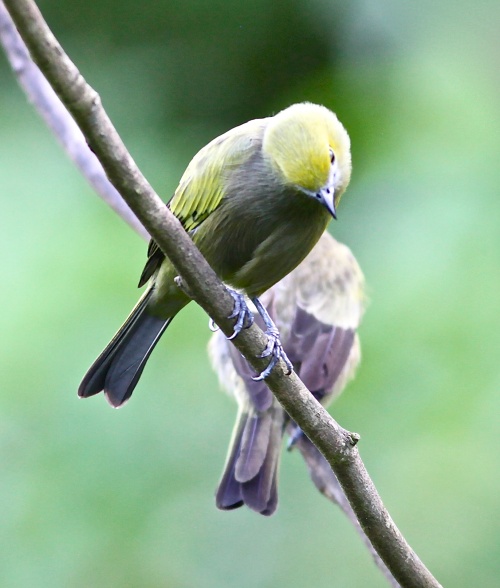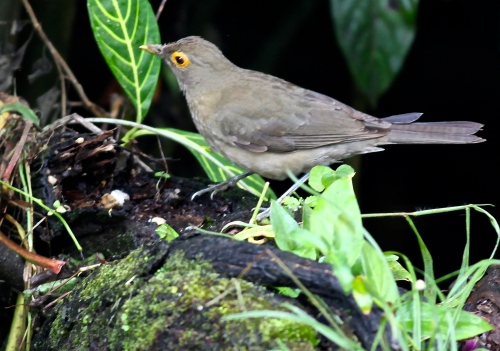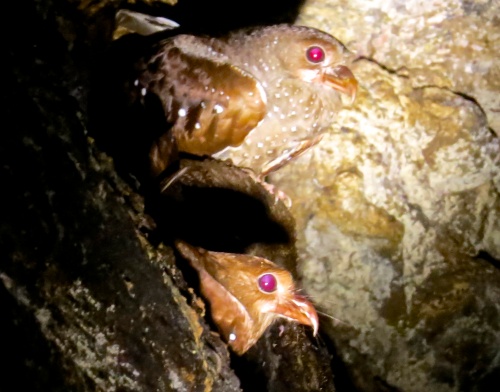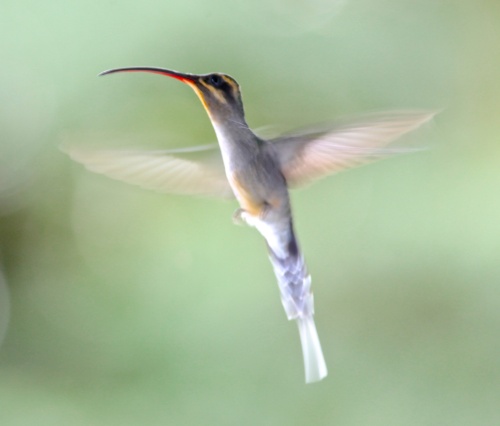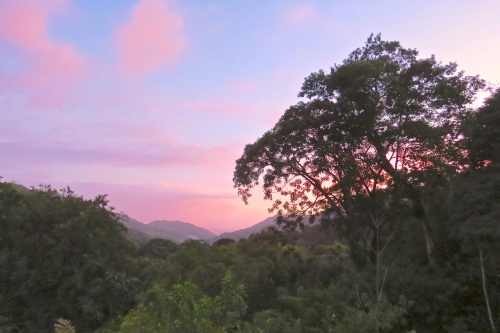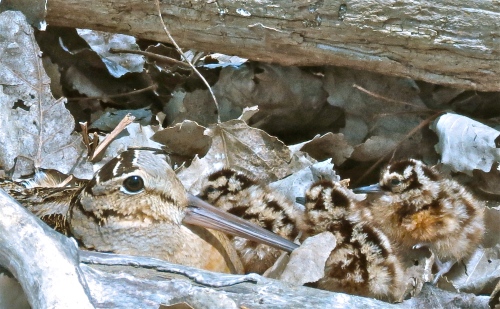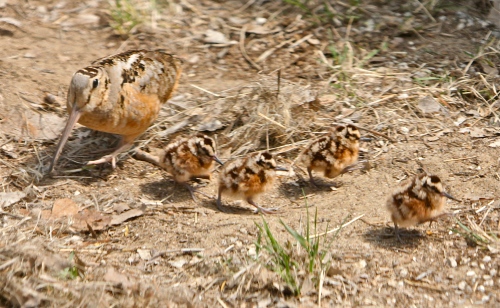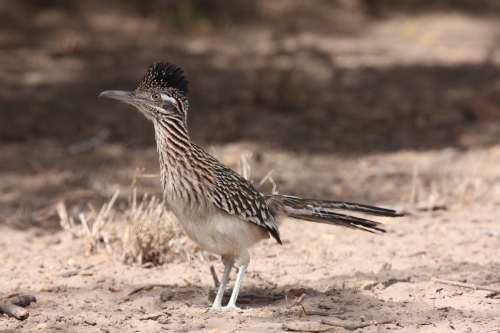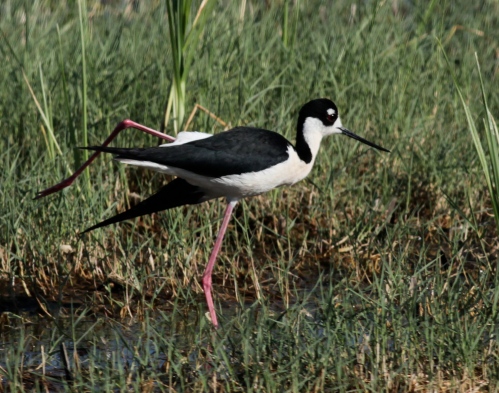Those of you who know me know that I am from Roswell, New Mexico. I grew up there, and it was a wonderful place in which to grow up. One of the best things about growing up in Roswell was that it is very close to Bitter Lake National Wildlife Refuge. I have previously written about the refuge here and here.
When I learned that the United Field Ornithologists (UFO’s) of Roswell were to hold their very first birding festival, of course I made immediate plans to attend. I was excited about the opportunity to visit birding friends in Roswell and to visit a Lesser Prairie Chicken lek.
If you have ever visited a lek, you know that it involves getting up very early so that birders can be on the lek and well hidden before the birds come out onto the lek. True to form, we arose at 3:00 a.m. and left for the lek at 4:00 a.m. We were too excited to be tired, although that would be subject to change later on in the day.
We sat quietly, listening to the birds arriving on the lek. We could hear them, booming and dancing, long before we could see them clearly.
We strained to see the birds in the pre-dawn light, and I struggled to adjust my camera so that I could photograph them.

Lesser Prairie Chickens in the pre-dawn light
When the sun rose, we were able to get excellent looks at the prairie chickens.

Lesser Prairie Chicken at sunrise
We watched until the prairie chickens were finished with their display, and then we traveled to the Waldrop Park Rest Area, a birding oasis out in the very middle of nowhere. We had been there only a short time when we saw a Scissor-tailed Flycatcher. This beautiful bird posed for us and allowed us all good looks at it.
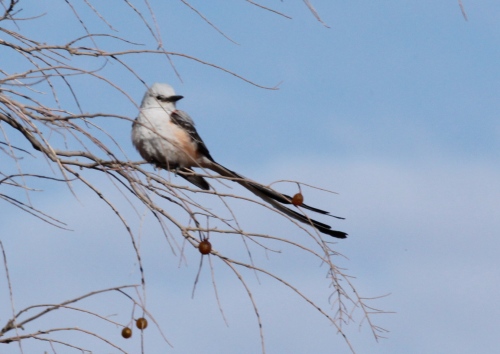
Scissor-tailed Flycatcher
We saw a number of other flycatchers, among them an Ash-throated Flycatcher.

Ash-throated Flycatcher
We saw many Swainson’s Hawks in the area.

Swainson’s Hawk
It seemed that wherever we went, we saw pretty Wilson’s Warbler’s flitting through the trees. This one was in the small town of Caprock.

Wilson’s Warbler
On our way back to Roswell, our sharp-eyed trip leader, Steve Smith, spotted a Barn Owl napping in a tree near the Pecos River. Of course we stopped to admire the beautiful bird.

Barn Owl
After a short break, we left for an afternoon trip to Bitter Lake National Wildlife Refuge. We spent a pleasant afternoon viewing shorebirds at the refuge.

Black-necked Stilt

American Avocet

Flock of Western Sandpipers
That evening we were treated to a barbecue feast at Retreat at Enchanted Farms, the festival headquarters. Michael Richardson and Susan Alston-Richardson, Retreat owners, provided wonderful food in a beautiful atmosphere.

Delicious food in a beautiful setting.
Laney Wilkins from the Spring River Zoo in Roswell brought Frodo the Great Horned Owl for us to admire.

Laney Wilkins and Frodo
Finally it was time for the evening’s entertainment. Michael Richardson introduced Professor Avian Guano, Bir.D, one of the many aliases of wildlife educator Denny Olson, also known as Doc Wild.

Michael Richardson introduces the evening’s entertainment
Denny Olson entertained us with Professor Guano’s antics, and we learned a great deal about bird behavior during the evening.
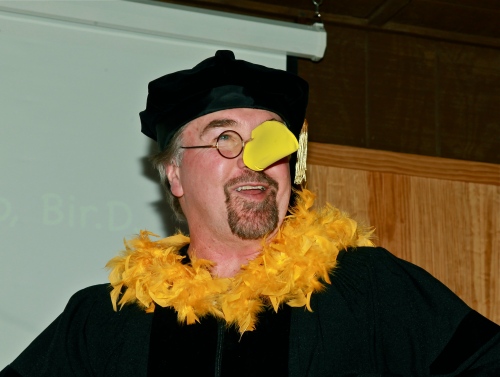
Denny Olson as Professor Avian Guano, Bir.D.
Susan Alston-Richardson appears to be a bit dismayed at being labeled a Brown-headed Cowbird.

Susan Alston-Richardson is not really a Brown-headed Cowbird.
After the evening’s entertainment came to a close, we headed off to get a few hours of sleep before the next day’s activities, which would be a trip to Rattlesnake Springs and Washington Ranch.
I was very excited to go to Rattlesnake Springs the next morning, as there had been reports of Vermilion Flycatchers in the area. Rattlesnake Springs, part of Carlsbad Caverns National Park, is an Important Bird Area and outstanding stopover site for land birds. The historic 80-acre New Mexico wetland features up-welling groundwater that draws Mexican vagrants as well as eastern and western birds, such as Painted Buntings, Vermilion Flycatchers, Summer Tanagers, and Yellow-billed Cuckoos.
We were led by Steve West, resident naturalist at Rattlesnake Springs, and surely enough, we saw a number of the little beauties. Although this image is backlit, I like the look of the sun shining through the bird’s wings.

Backlit Vermilion Flycatcher
We continued to see flashes of red throughout the morning.

Vermilion Flycatcher
We saw flycatchers, warblers and tanagers at Rattlesnake Springs, but most of them were too deep in the branches of thick trees for me to get decent photos.
After a beautiful morning at Rattlesnake Springs, we had a lovely picnic lunch at the pond there. Everyone was much happier about the delicious lunch than this photo might suggest.

Delicious picnic lunch at Rattlesnake Springs
Our last stop of the day was at Washington Ranch, another site near Rattlesnake Springs, to look for a Lewis’s Woodpecker. We found the bird almost immediately, although unfortunately it was almost beyond the range of my lens. I did get a photo that was good enough to identify the bird.

Lewis’s Woodpecker
The Roswell birders were friendly and welcoming, and the birding festival was outstanding. It was difficult to believe that it was an inaugural event. Everything was beautifully organized, and we saw great birds. I am already looking forward to next year’s festival!
















